9 Tips for Exercising in Winter Weather
Staying Fit When It's Freezing
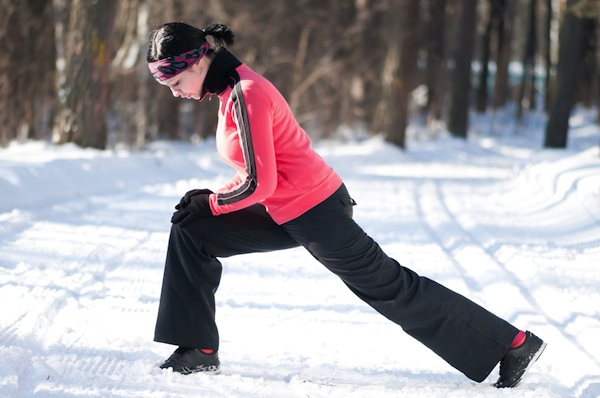
When the mercury drops and icy winds are whipping about outside, it may be hard to leave the warm comforts of home and make yourself go for a jog.
But working out during the winter doesn't have to be a challenge with the right preparations and safety precautions, you can get your heart rate up while enjoying the fresh, frosty air.
Here are nine tips to help you exercise in winter weather.
Know the signs of frostbite and hypothermia
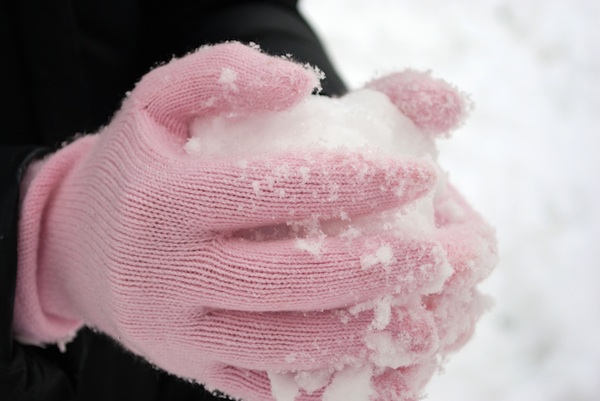
Exposure to cold for long periods of time can cause hypothermia, which occurs when the core body temperature drops below 95 degrees Fahrenheit (35 degrees Celsius).
Symptoms of hypothermia include an inability to think clearly or move easily, shivering, exhaustion, memory loss, drowsiness, fumbling hands, slurred speech, pain in the extremities, a slow and weak pulse, as well as collapse or unconsciousness.
Frostbite is an injury that occurs when skin tissue freezes. In cold weather conditions, any exposed skin is at risk of freezing, which can lead to frostbite, the U.S. Public Health Service Commissioned Corps warns.
Symptoms of frostbite include a loss of feeling and a pale or bluish skin tone in one or several extremities. Skin affected by frostbite may feel hard and cause an aching, tingling or stinging pain. A person suffering from frostbite may also be vulnerable to hypothermia. Frostbite occurs most often on the nose, ears, cheeks, chin, fingers or toes, which is why it's vital to keep these areas warm when spending prolonged time outdoors.
Dress in layers
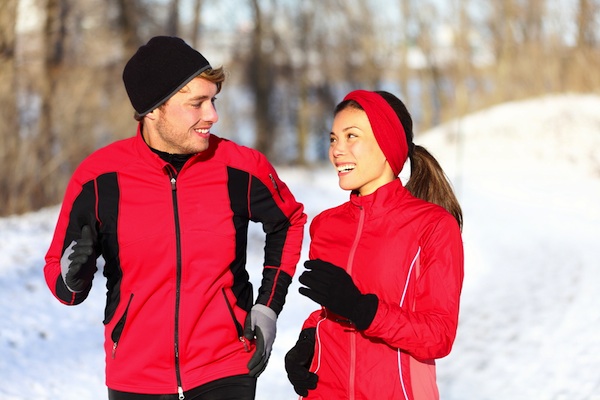
To smartly dress for a cold weather workout, wear multiple layers that are easy to remove, so that you can take off a layer if you get too hot. Wear lightweight, breathable fabrics that won't restrict your movements.
The number of layers you'll need depends on the intensity of your physical activity and the temperature that day. Each quarter-inch of clothing adds one layer of insulation, according to the United States Department of Health and Human Services (HHS).
Make sure that your outermost layer is water-repellent, so that it helps you stay dry if it rains or snows.
Keep your extremities warm
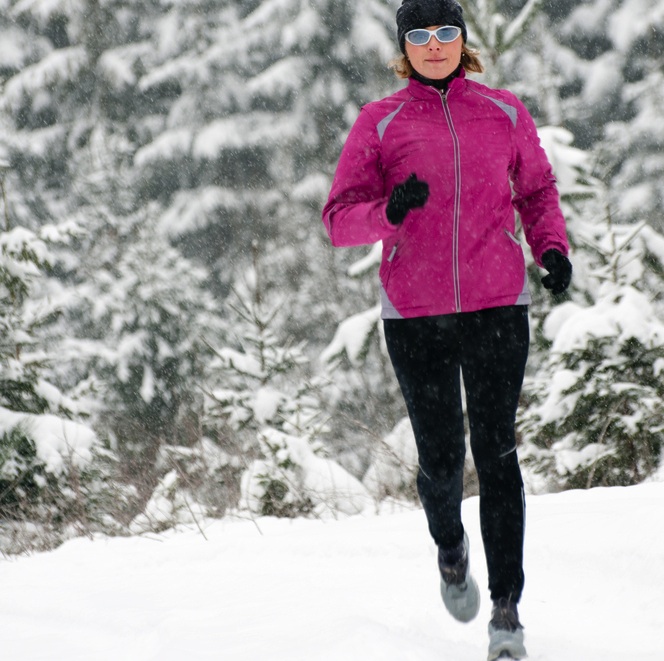
In cold weather, your body diverts blood flow so that it is concentrated in your body's core, which may leave your hands and feet vulnerable to frostbite, according to the Mayo Clinic. Be sure to wear gloves or mittens when exercising in cooler temperatures, or consider bringing along chemical heat packs to warm up your hands.
In freezing temperatures, a substantial amount of body heat is lost from an uncovered head, according to the National Institutes of Health (NIH). Wearing a hat, such as lightweight fleece cap, will help your body retain heat.
Your ears, nose and mouth need special attention too. Foldable earmuffs, scarves and facemasks are great for covering up these vulnerable areas and shielding them from the cold.
Don't overdress
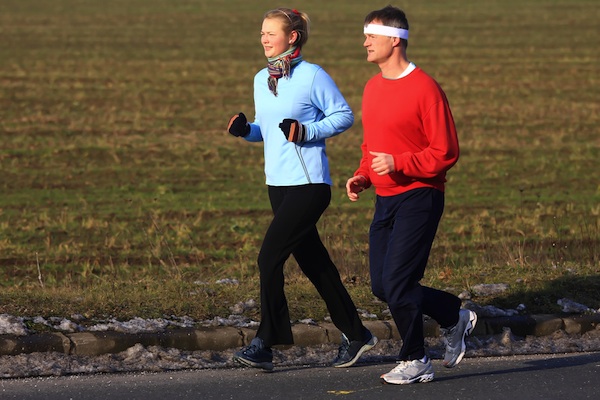
Although heatstroke may seem like a summer ailment, it's also possible to overheat in below-freezing temperatures, according to the University of Rochester Medical Center. If you're donning a lot of thick, warm layers, make sure to remove them as needed.
Dressing too warmly may also cause you to perspire more, and sweaty clothes combined with cold winds can result in feeling chilled. If you sweat through a layer of your clothes, go inside and remove it immediately, because wearing damp clothing in windy or cold weather can make you more susceptible to hypothermia, the NIH warns.
Drink up

Just because it's not hot out doesn't mean that you can cut down on your water intake during a workout you can become dehydrated in cold weather too, the Mayo Clinic warns.
Drink plenty of fluids before you head outside, and be sure to bring some along with you in a reusable beverage container. Skip sugary or caffeinated sports drinks, and load up on water instead.
Check the weather forecasts

Find out what the weather conditions will be like during the time you're planning to be outdoors especially if you'll be outside for a prolonged period of time, such as spending the day on the ski slopes.
Dress accordingly, whether it's for rain, snow or sunshine, and adjust your layers and accessories, such as scarves and hats, as needed. Remember that it is always better to play it safe and dress warmly, then remove as layer if you have to, than to under-dress and risk developing frostbite or hypothermia.
Wear the right gear
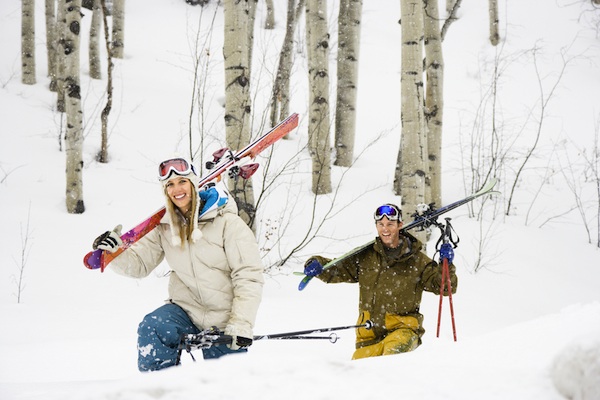
Wearing the right gear and equipment while you work out is especially important during the winter, when snow and ice present slipping dangers. Make sure that your sneakers or boots have enough traction to keep you steady under these conditions. Your footwear should also be adequately warm and preferably water-resistant.
Because the sun sets earlier during the colder months, wear light-colored or reflective clothing, so drivers will see you clearly in the dark. Follow the same rule if you're going out for an early-morning, pre-dawn run.
For popular winter activities such as skiing, snowmobiling and snowboarding, the Mayo Clinic advises always wearing a helmet, along with any additional safety equipment as needed, including snow goggles and knee or elbow pads.
Be sun smart

Just because it's cold, cloudy and gloomy out doesn't mean that you can forgo sun protection. The Food and Drug Administration recommends applying a sunscreen with an SPF of at least 30 before heading outside in the wintertime. That's because it's the sun's UV rays, not the outdoor temperature, that cause skin damage.
Wear sunglasses to guard the delicate skin around your eyes against bright sunshine or biting winds, and a lip balm containing an SPF can protect lips from becoming chapped or wind-burned. [Related: 5 Ways to Prepare Your Skin for Winter]
Plan your route

Whether you're going cross country skiing or biking along a trail in the woods or just jogging around the neighborhood, it's important to map out and study the location before you go. Getting lost can be more dangerous in cold conditions.
Plan the length and location of your activity to avoid becoming fatigued at a place that's far away from a warm recovery station, the U.S. Public Health Service Commissioned Corps advises.
For example, if you usually run or bike along an off-road trail during the warmer months, you may want to find an alternative route through a neighborhood with places that can provide heat and shelter such as a cafe in case you need a break from harsh weather conditions along the way.
Sign up for the Live Science daily newsletter now
Get the world’s most fascinating discoveries delivered straight to your inbox.










